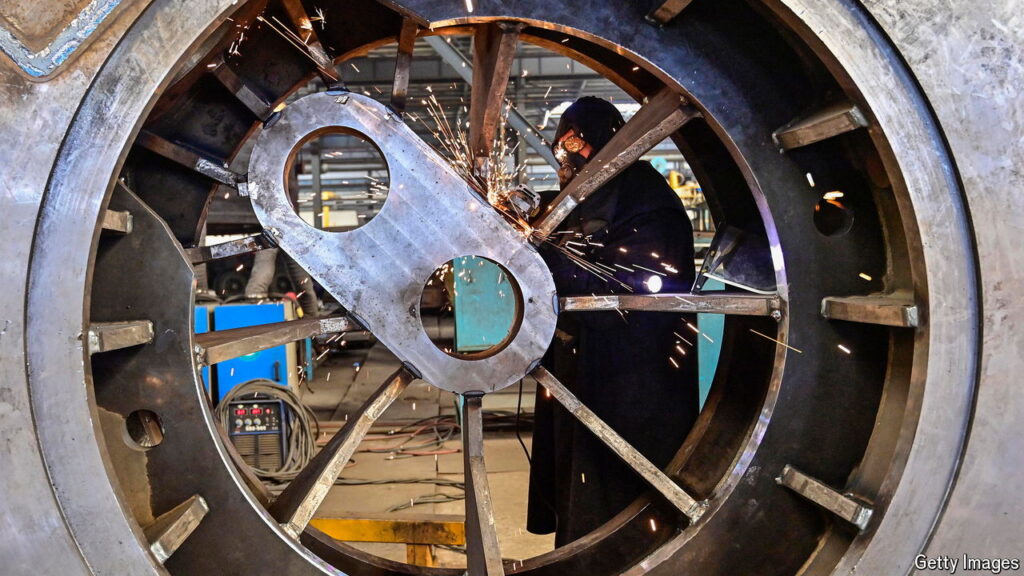China’s economic growth target of “around” 5% for this year was initially considered ambitious, but as the country continues to show signs of recovery, meeting this goal seems increasingly likely. Foreign banks have adjusted their forecasts to reflect this positive outlook, with data released on April 16th indicating that the economy grew by 5.3% in the first quarter, exceeding expectations and outpacing the target set by Chinese leaders.
The key question is: how is China managing to achieve this impressive growth rate? While many countries at a similar stage of development tend to prioritize the services sector, China’s leaders have maintained a focus on “hard” output such as manufacturing. President Xi Jinping views manufacturing as a critical driver of both economic prosperity and national security. He is determined to build a “complete” industrial chain that would reduce China’s dependence on foreign sources for crucial technological inputs. The latest five-year plan underscores the government’s commitment to halting the decline in the manufacturing sector’s contribution to GDP.
This strategic shift towards revitalizing China’s manufacturing industry reflects the government’s long-term vision for sustainable economic development. By strengthening its industrial capabilities and reducing reliance on foreign imports, China aims to enhance its economic resilience and safeguard its technological sovereignty. President Xi’s emphasis on achieving a self-sufficient industrial chain signals a departure from the country’s previous economic model, which was characterized by rapid growth fueled by exports and investment.
In addition to its focus on bolstering the manufacturing sector, China is also prioritizing innovation and technological advancement as key drivers of economic growth. The government has ramped up efforts to support research and development, foster entrepreneurship, and promote the adoption of cutting-edge technologies in industries ranging from electric vehicles to artificial intelligence. By investing in innovation and fostering a conducive ecosystem for technological progress, China aims to position itself as a global leader in key industries of the future.
Furthermore, China’s proactive response to the global COVID-19 pandemic has played a significant role in facilitating its economic recovery. The country’s swift containment measures and targeted stimulus policies have helped minimize the impact of the pandemic on its economy and set the stage for a robust rebound. By swiftly implementing measures to support businesses, protect jobs, and stimulate consumer spending, China has managed to navigate the challenges posed by the pandemic and maintain its economic momentum.
Looking ahead, China’s economic outlook remains positive, with strong growth expected to continue in the coming months. The government’s commitment to driving structural reforms, promoting innovation, and fostering sustainable development bodes well for the country’s long-term economic resilience and competitiveness. As China continues on its path towards economic recovery and transformation, it is poised to play an increasingly prominent role on the global stage, shaping the future of the world economy.



